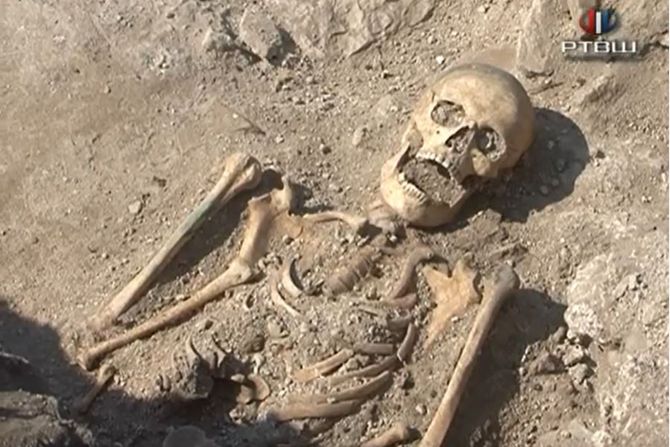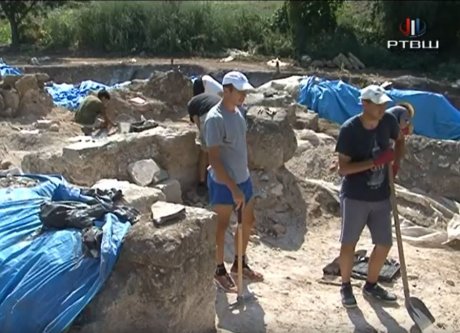
A Nemanjic endowment, larger than Gracanica, still hides big secret: It will soon see light of day
A monumental medieval Serbian Orthodox church at Dvorine near the town of Arandjelovac, which archaeologists began exploring in 2016, was larger than the Gracanica Monastery, and built by a powerful member of Serbia's Nemanjic dynasty, new findings have confirmed.
A National Museum team, led by Professor Dr. Dejan Radicevic, along with students and US archaeologist Dylan Perkinson, have been working to clear the debris and soil from the church and conserve the site.
The temple at Dvorine, a ruler's endowment, was 27 meters long and 14 meters wide - larger than Gracanica. The church was erected in the early to mid-14th century, judging by the fact it was built in the Serbo-Byzantine style that was in use since the time of King Milutin and through the end of the rule of the Nemanjic dynasty. Other possible founders are Stefan Decanski and Dusan Silni (Dusan the Mighty) - while further excavations will help determine the date more precisely.
The greatest mystery of the grandiose temple is the reason why it was built this far north, near what was at the time the troubled border with Hungary.
Until the discovery at Dvorine, it was believed that Serbo-Byzantine style churches existed only in the southern territories of medieval Serbia - Kosovo and Metohija and Macedonia. Now, archaeologists have come up with evidence that breaks with another preconceived notion - that the Nemanjics had no endowments in Sumadija (the central part of modern-day Serbia).
"The church was probably built during the time of King Milutin, who lost Belgrade in the war with the Hungarians in 1319, where the seat of an important (Serbian Church) diocese was located. Written sources are silent about its further fate, but a number of prominent historians believe that the diocese did not cease to ecxist, but was merely relocated. It's possible that it was moved to Vencac, the part of the diocese that remained within Serbia. This may be the reason why a grandiose temple was built here," archaeologist Dr. Dejan Radicevic, an assistant professor at the Faculty of Philosophy in Belgrade, told RTV Sumadija last year.

Archaeologists have now reached a medieval burial ground in the yard of the church, breaking through a thick layer of newer cemeteries. An even more difficult task awaits them inside the temple, where they must dig through a thick layer of debris from the remains of demolished domes and tombs from the 17th and 18th centuries. During the Great Migrations, the local population escaped the Ottomans, who then demolished the church to its foundations and pillaged even its beautiful stone platings and bricks.
The villages in the area were rebuilt only after several decades later, when the remains of the church were no longer visible above the ground. However, the memory of the shrine did not disappear: the space of the temple with its yard, even the foundation walls were being dug out for burial sites, while huge medieval monoliths were used as tombstones.
The conservation design is due to be completed in the fall so that work on conserving the remains of the church could proceed next year.
VIDEO: One skull next to another - the Roman Legionary Camp in Viminacium, Serbia
(Telegraf.rs/RTV Sumadija)
Video: Koncert “Novogodišnji muzički intermeco” održan na terasi Narodnog pozorišta
Telegraf.rs zadržava sva prava nad sadržajem. Za preuzimanje sadržaja pogledajte uputstva na stranici Uslovi korišćenja.

